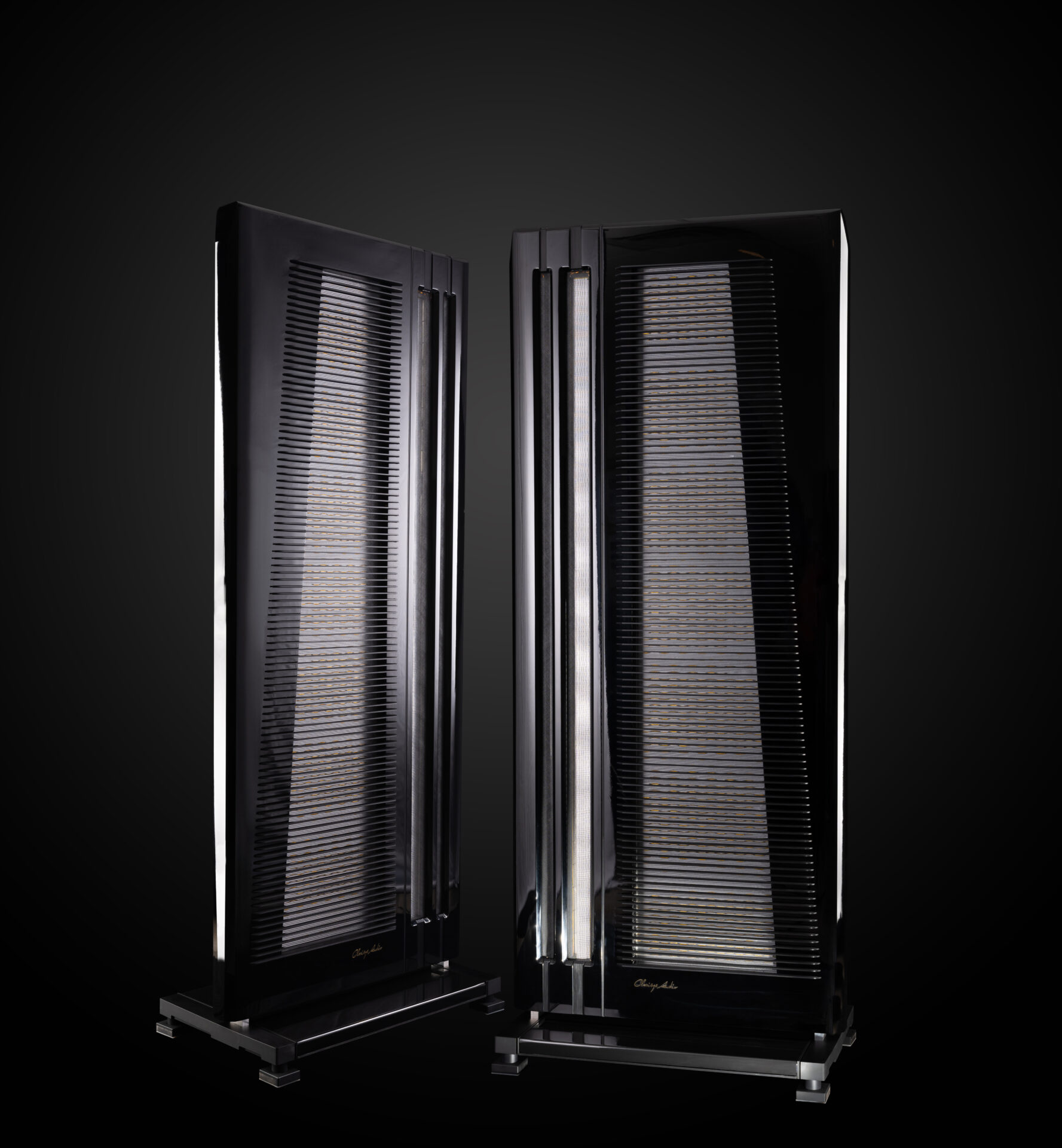That doesn’t make one speaker superior to the other. It makes them different. Both are capable of exceptional levels of musical insight and satisfaction. This is a case of which an individual listener finds more satisfying – the holistic goodness of the Auditorium or the closer, more detailed and intimate picture offered by the Göbels. In fact, we can express the differences as a continuum, with the Clarysis at one end and the Göbels at the other, one fastened on the musical whole, the other on the strands within the music. The Stenhein Ultime 2-X sits squarely between those two, contrasting products. It offers much of the musical coherence and natural tonality of the Auditorium, the same, almost organic ability to allow the music to breathe, albeit without the same degree of acoustic development or dimensionality. At the same time it offers a closer and more clearly separated presentation, with the crisp dynamic jump and impact that comes from a good big box – even if it can’t match the Noblesse in terms of dynamic snap and overall transparency.
 So far so good. But like any such analogy it risks over-simplifying the situation. So, to suggest that the Clarysis speakers aren’t fast or dynamic is simply wrong. The distinctions here are presentational. Where things get interesting is when we factor in the big Avantgarde Trios. These extend the continuum out beyond the Göbels, but they also start to curve it forward – as does the Auditorium. So although the Trio is even quicker, more transparent and more dynamic than the Noblesse, it also delivers greater scale and a more holistic sense of acoustic. Just as the Trio reaches out towards the distinctive performance aspects of the Clarysis, so the panels do the same in reverse, taking the performance continuum and bending it into something closer to an incomplete circle with the panels and big horns poised on either side of the gap in the ring. It’s when you start to think of relative performance in these terms that you start to realise just why the Trios and now the Clarysis are such archetypical disruptors, offering musical capabilities and opportunities that are beyond all but the very best box speakers – and doing so at a fraction of their price.
So far so good. But like any such analogy it risks over-simplifying the situation. So, to suggest that the Clarysis speakers aren’t fast or dynamic is simply wrong. The distinctions here are presentational. Where things get interesting is when we factor in the big Avantgarde Trios. These extend the continuum out beyond the Göbels, but they also start to curve it forward – as does the Auditorium. So although the Trio is even quicker, more transparent and more dynamic than the Noblesse, it also delivers greater scale and a more holistic sense of acoustic. Just as the Trio reaches out towards the distinctive performance aspects of the Clarysis, so the panels do the same in reverse, taking the performance continuum and bending it into something closer to an incomplete circle with the panels and big horns poised on either side of the gap in the ring. It’s when you start to think of relative performance in these terms that you start to realise just why the Trios and now the Clarysis are such archetypical disruptors, offering musical capabilities and opportunities that are beyond all but the very best box speakers – and doing so at a fraction of their price.
When practicality intrudes…
For all their considerable musical accomplishments and their in-built upgrade path, there is no escaping the reality that confronts the prospective Clarysis owner. The speakers are big, they’re heavy and they’re expensive. They are inflexible when it comes to placement and demanding of the driving system. Go active and the cost increases considerably. While I can tell you about the pairing of six-channels of CH and the active Auditoriums, that’s as far as I can go. I simply don’t have six-channels of anything else available. Which is where this exercise enters the (historically unreliable realms) of anecdote. For at least one show in the US, the Auditoriums will be played active with VAC amplification, so pairing with tube amps is definitely on the cards. I would imagine that a Clarysis VTL combination could be pretty spectacular, but again that is speculation. Of perhaps more moment is the question of how more affordable amplifier options might fare. With their predilection for power and the ability to project serious headroom, I’d love to hear what a sextet of Moon 400M amps might do with the active Auditoriums (or a quartet with the smaller Studios). These unassuming (and seriously under-rated) little amplifiers are capable of punching well above their modest weight and doing it in some seriously demanding systems. At $27,600 all-in for the six-pack, that’s considerably less than one A1.5! considering that one serious benefit of active operation is to make the job of the various amplifiers easier, it’s an intriguing prospect.

